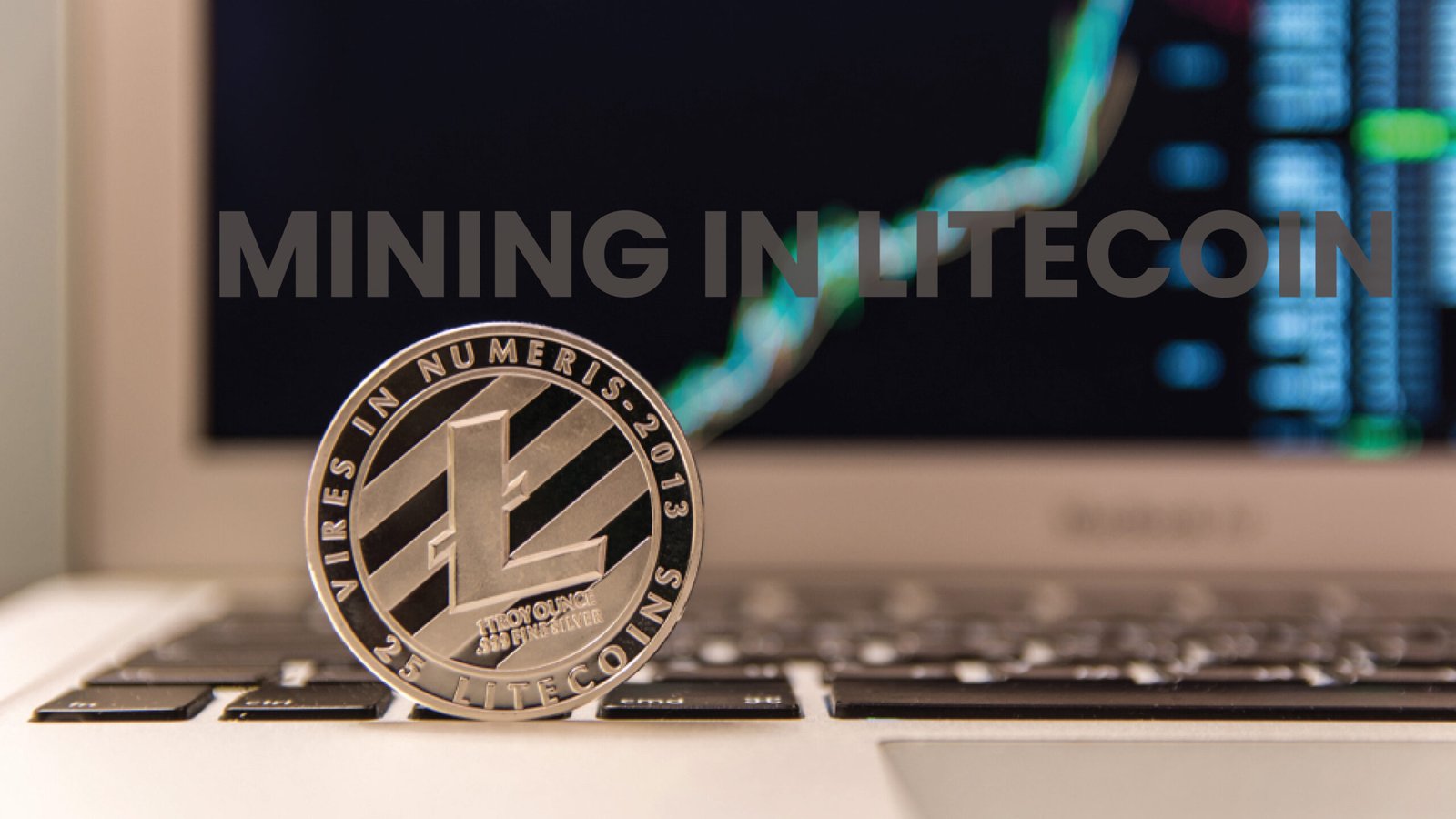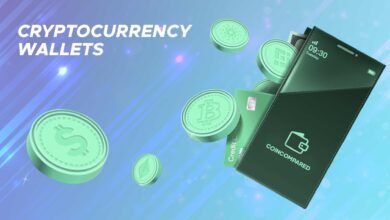
What Is Mining in Litecoin (LTC)?
In 2011, Litecoin (LTC), a cryptocurrency, was produced as a fork of Bitcoin. It uses the Scrypt hashing method, which calls for hardware and software created expressly for mining. It continues to rank among the top cryptocurrencies for value and trading volume and is mineable.
Validating transactions on the blockchain, then closing and opening a new block, is the process of Bitcoin mining. The proof-of-work consensus technique, which is used by Litecoin, makes use of computing power to solve the nonce, a component of the hash that protects the block. The alphanumeric sequence of numbers that the hashing method encrypts is known as a hash. Litecoin is given as payment after the nonce is resolved.
It can be mined on computers with central processing units and graphics processing units just like Bitcoin. In contrast, investing in an application-specific integrated circuit (ASIC) and joining a mining pool is more lucrative and competitive. Knowledge of Litecoin Mining
Mining for Litecoin is quite like mining for Bitcoin. On a machine, computer, or other device, a mining programme is run. However, the mining software randomly creates encrypted numbers and letters to try to estimate a value lower than that of the nonce, a two-digit random alphanumeric figure contained in the block’s hash. Mining is sometimes regarded as a difficult mathematical operation.
A mining network is created when miners connect to the internet. Anyone seeking to mine Litecoin competes with all other miners in the network to solve the hash because there is no restriction on the number of mining programme users inside a network of miners.
A payment of 12.5 Litecoin is given to the first miner to guess a hash smaller than the target hash defined by the blockchain protocol. The reward evolves with hash difficulty over time. Litecoin Mining Techniques
To get going, you will need to invest in mining hardware rigs and mining software. The current state of the Litecoin mining network makes it impossible or very difficult for a single miner using an ASIC, a PC, or a laptop to solve a hash and earn a reward. With one or even two ASICs, you might still be unable to keep up with the mining network and massive farms and pools of miners.
A CPU typically mines at a rate of thousands of hashes per second (KH/s), whereas the Litecoin Miner L7 can mine at a rate of 9 GH/s (gigahashes per second, or nine billion hashes per second)2.3 More than 120 TH/s (120 terahashes per second, or 120 trillion hashes per second) can be mined by a mining pool.
You’ll need to buy one (or more) ASIC miners and link them to the internet to start mining Litecoin. The next step is to select a mining pool to use, set up the miner using the pool’s instructions (which are typically provided on the pool’s website), and start mining according to the guidelines for your equipment, software, and pool.
Additionally, you must decide on a wallet to keep your private keys in. Use wallets like Exodus, Electrum, or Mycelium, for example.
How to Choose Mining Equipment:
When deciding whether to purchase Litecoin mining hardware or software, you should take the following into account:
- Your objectives and anticipations
- Price
- Hashrate
- Energy utilization
- Cost
- Which pool to join
- Your Expectations and Goals
You must first decide what you want to achieve by mining Litecoin. For instance, you might wish to mine to earn some extra spending money or to save the Litecoin you win as a reward. Whatever your motivations, you must be certain that you can obtain the desired returns before purchasing pricey equipment
Price:
Current ASIC mining expenses and earnings are provided by the mining pool F2Pool. Even if the Litecoin Miner L7 is one of the most successful models, it will probably take you years to repay your investment given its $18,500 price tag. Your spending will determine how effective and profitable as a miner.
It’s possible to find used ASICs for sale at significantly reduced costs, but you should exercise caution because some of these devices have seen quite intensive use.
Use of Energy and Cost:
You ought to take an ASIC miner’s energy consumption into account. The Antminer L7 Litecoin ASIC miner consumes about $10 worth of energy each day. Your annual profits would decrease further because of your energy cost rising by more than $3,500.6
Only the energy necessary to run the miner is included in this pricing. ASICs generate a lot of heat while operating; to be most profitable, they must run continuously. If you can’t find a way to evacuate the heat, an ASIC will increase your cooling costs. Hashrate
Another important factor is the hash rate. You’ll be more competitive whether you’re working alone or in a pool the faster your ASIC can hash. Although several mining pools divide the cryptocurrency they receive, the majority base individual payments on the quantity of work each miner contributes.
Your profits will probably be significantly lower than those of a miner who has a faster mining rig or setup if you have a slow ASIC.
Choosing a Pool to Join:
After choosing the tools you’ll employ, you must choose whether to mine alone or with a group of people in a pool. You run the danger of spending a lot of time mining alone without discovering a block. The entire 12.5 LTC extra will be yours, though, if you’re fortunate enough to mine a block alone. Pool mining, in which numerous miners pool their resources and divide the rewards by the hashing power given, is still susceptible to the whims of chance. For example, your pool might unlock three out of ten blocks before having to wait for 200 blocks to open for the next one. With a pool, your profits are almost certainly going to be more consistent; but you only get a little portion of each block the pool finds.
One Litecoin: How Long Does It Take to Mine One?
One Litecoin may be mined in 2.5 minutes, which is the block time of the cryptocurrency. Compared to Bitcoin, Bitcoin Cash, and Bitcoin SV, Litecoin is mined four times as frequently. Two widely used mineable cryptocurrencies, Dogecoin (1 minute) and Ethereum Classic (15 seconds) have block generation periods that are even faster than Litecoin.
What Method of Mining Litecoin Is Best?
Early in 2023, joining a sizable pool and employing moderately potent ASIC equipment will be the best way to mine Litecoin. Even if you have the most powerful rig available, using a pool is strongly advised. Solo mining is still viable with a highly powerful ASIC setup. You may greatly improve the constancy of your mining income by joining a pool.
Additionally, there are a few respectable free mining pools for Litecoin on the market. Pool-based mining is therefore ideal for LTC.
Make careful to mine Dogecoin in a combined format with Litecoin when setting up your mining operations. From doing this, you use no extra resources and solely stand to gain from earning DOGE in addition to LTC.
Is Mining Litecoin Profitable?
Only Dogecoin has a lower difficulty rating than Litecoin, which was previously discussed in our article. But that doesn’t necessarily imply that mining Litecoin is profitable. In 2023, there is a lot of competition among miners on almost every well-known network for mining cryptocurrencies.
Furthermore, Litecoin has a limited supply, much like Bitcoin. Only 84 million Litecoins will ever be produced, and as of January 2023, over 72 million of those have already been produced. By 2142, the payouts will be negative when combined with the halving process. Therefore, even though Litecoin is still currently profitable, keep in mind that this profitability will eventually decline. Without a doubt, WhatToMine.com is the calculator that is utilized the most frequently. Go to the website’s calculator section, select Litecoin, and enter the necessary information to create an estimate. These include your electricity bills, the hash rate and power consumption of the mining equipment you currently possess or are considering purchasing, and the fees you would incur if you mined through a pool.
The calculator will instantly let you know how much if any, profit you will make. But keep in mind that estimations of mining profitability can change quickly, based on things like network rivalry amongst miners and, most significantly, the price of LTC now.
How to Use Your Litecoin Mined:
Your mined Litecoin can be obtained in two ways.
Buy on an Exchange:
A reliable exchange like Bybit is where you may sell your Litecoin. You can sell your Litecoin at Bybit using P2P trading or One-Click Buy.
With Bybit’s One-Click Buy feature, you have an easy option to quickly sell your Litecoin. Simply click on Sell, choose the coin you want to sell (in this case, LTC), the amount of fiat money you want to receive, and the number of coins you want to sell. Then, to confirm your sale, click Sell LTC. You can choose your favourite payment method or just go with the one that Bybit recommends given the current exchange rate.
Additionally, Bybit offers a safe P2P platform that links vendors and buyers at zero fees. With many levels of security protecting your assets, such as KYC verification for all advertisers and an escrow service to safeguard user payments, Bybit’s P2P service delivers top-notch security. Additionally, it allows you more freedom in selecting the buyer because you can exclude certain buyer advertisers by entering information in the areas for amount, fiat currencies, or payment methods.
As Collateral, Lend:
Additionally, you can use Bybit Lending to lend your Litecoin and receive hourly payments after your deposit in the form of high-interest payments from borrowers. Additionally, Bybit Lending promises a flexible redemption term that allows you to credit your redemption right away. A comprehensive risk management strategy, including an Insurance Fund and collateral value ratios, keeps your money safe. All you need to start lending on Bybit is a Bybit account, so getting started is simple. To access the Unified Trading Account (UTA) page with the Lending function on its menu, log into your account and click on Bybit Lending. The next step is to confirm your transaction and select an asset to lend (LTC in this case). You can see the specifics of your transaction, including the hourly interest rate, once it has been validated.
Conclusion:
Purchase of one or more ASIC miners made expressly for Litecoin and Scrypt, along with participation in a mining pool, is the best and only way to increase your chances of receiving a reward. Otherwise, you’ll simply lack the hashing power necessary to compete.
This article does not constitute a recommendation by Investopedia or the author to invest in cryptocurrencies or other Initial Coin Offerings (“ICOs”). Investing in cryptocurrencies and other ICOs is very hazardous and speculative. Before making any financial decisions, it is always advisable to get the advice of a knowledgeable specialist because every person’s circumstance is different. No guarantees or claims are made by Investopedia on the timeliness or accuracy of the information provided here.
Litecoin and its predecessor, Bitcoin, have a lot in common, including the mining process and the reward-halving mechanism. Despite being one of the simplest cryptocurrencies to mine, profitability can fluctuate and there is fierce rivalry among miners. The profitability of mining Litecoin might also be impacted by the declining mining payouts over time (due to the restricted supply and halving process). In the always-changing mining environment, miners can increase their chances of success by using the appropriate equipment and techniques.
FAQs:
Can I use Litecoin For Nothing?
Yes, but it might not currently be financially viable. To mine Litecoin profitably nowadays, you need mining hardware with GPUs and ASICs.
How long Does Mining Litecoin Take?
At the current Litecoin difficulty level, hash rate, and block reward (a block reward of 12.5 LTC and a hash rate of 9,500.00 MH/s, using 3,425.00 watts of power at $0.10 per kWh), it would take 11.5 days (about 1 and a half weeks) to mine 1 Litecoin as of Tuesday, July 18, 2023.
Can a Phone be my Litecoin?
Introduction. By controlling cloud mining from your phone, you can earn free Litecoins through mining. The software enables users to use a small portion of the electricity allotted to mining farms and earn coins (LTC) while doing so.
Is BTC Superior to LTC?
Which is preferable depends on your objectives, your intended use for your money, and your opinions regarding cryptocurrencies. Litecoins are created more quickly than Bitcoin, although Bitcoin has a higher value. Litecoin may be preferable if you want more coins at a lower value, whereas Bitcoin may be better if you want greater value per coin.






